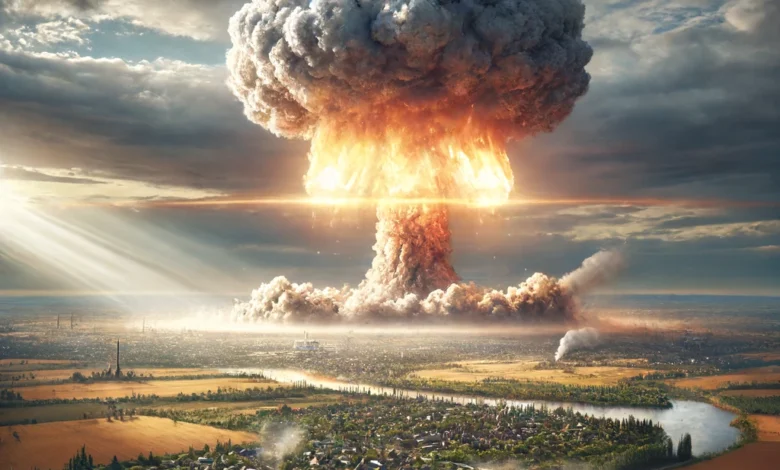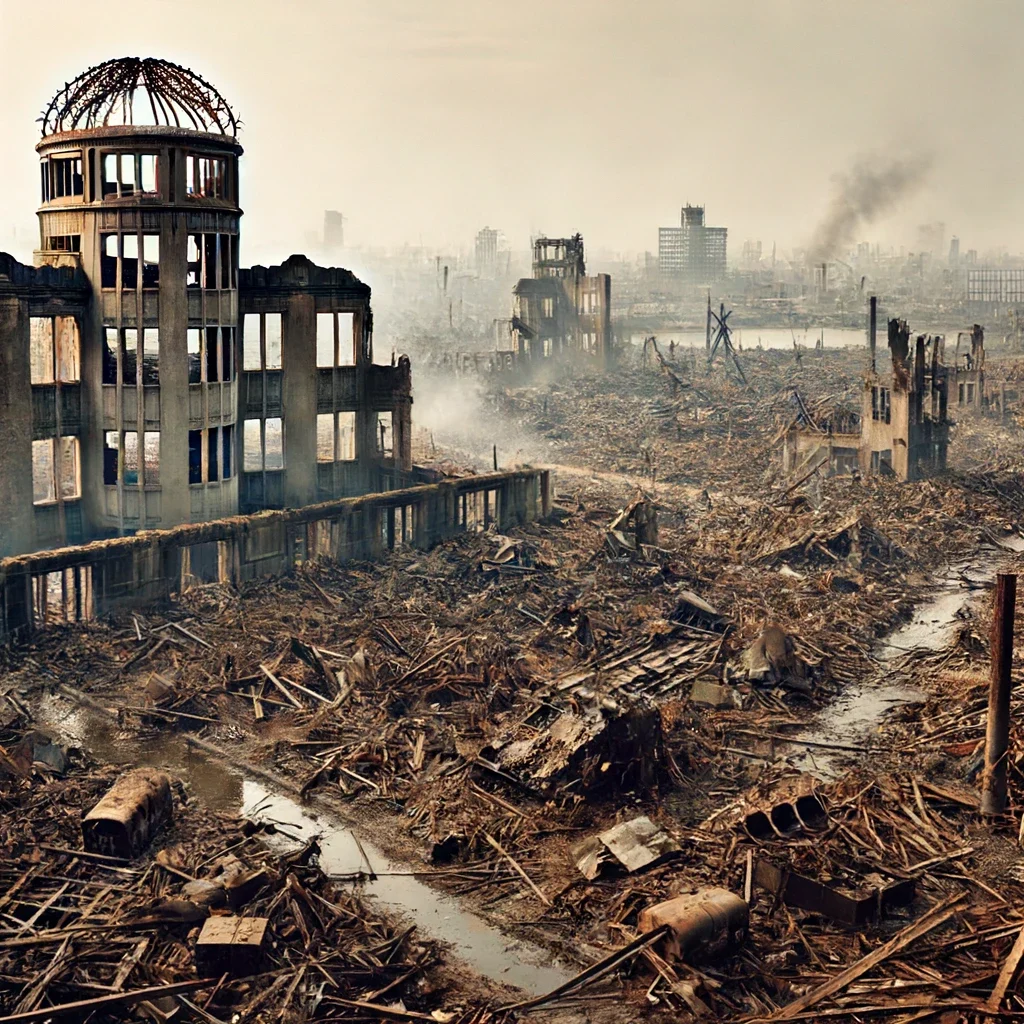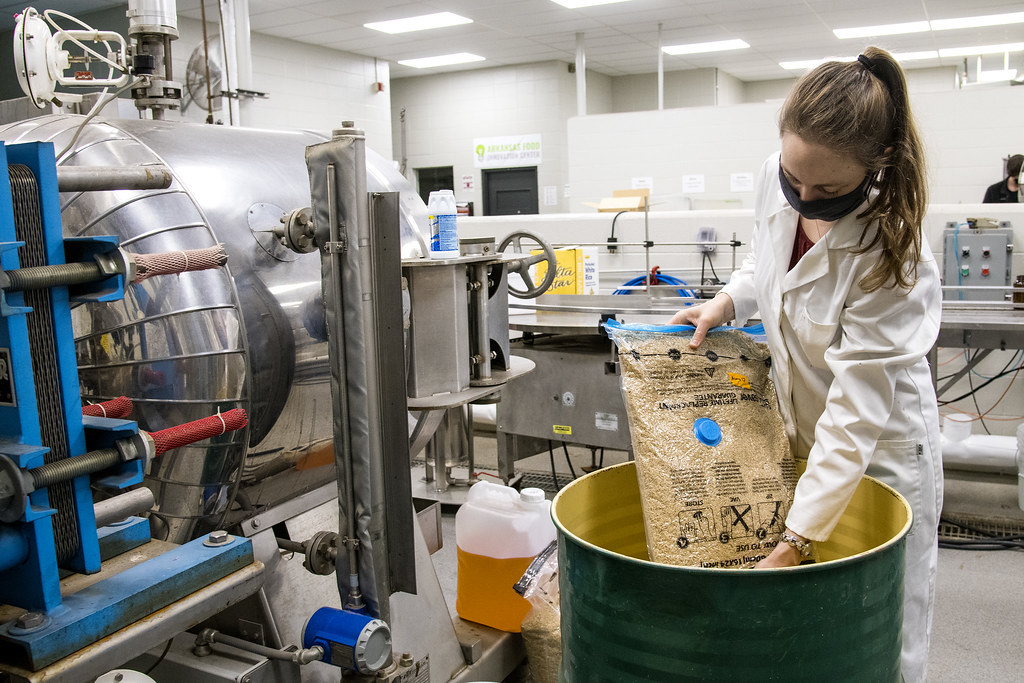
The escalating geopolitical tensions between Russia and NATO have renewed fears of a nuclear conflict. As both sides engage in military posturing and strategic maneuvers, the possibility of a nuclear exchange, once relegated to Cold War anxieties, now looms larger. The implications of such a conflict are dire, particularly for global food security, which would face unprecedented challenges in the aftermath of a nuclear exchange. Understanding these potential consequences, a nuclear winter, requires a comprehensive look at historical precedents, the current state of nuclear arsenals, and the specific impacts of nuclear detonations on agriculture and food security
The Consequences on the Agricultural Industry and Food Security in the Aftermath of the Nuclear Bombs on Hiroshima and Nagasaki During World War II
The bombings of Hiroshima and Nagasaki in 1945 provided early, albeit limited, insights into the agricultural impacts of nuclear warfare. The immediate destruction was catastrophic, with both cities experiencing massive loss of life and infrastructure. While the agricultural regions surrounding these cities were less directly affected, the long-term environmental fallout included radioactive contamination of soil and water, leading to reduced agricultural productivity.

Immediate Agricultural Damage
The immediate vicinity of Hiroshima and Nagasaki saw total annihilation, where crops, livestock, and farmlands were obliterated by the intense heat and blast waves. Although these areas were primarily urban, the shockwaves and radiation spread beyond, impacting rural areas. Fields within a few kilometers of the blast zones were scorched, and the intense heat killed crops instantly.
Radioactive Contamination
In the aftermath, one of the most significant challenges was radioactive fallout. The bombings released large amounts of radioactive isotopes into the atmosphere, which then settled onto the ground. This contamination affected soil and water sources, critical for agricultural activities. Crops grown in these areas absorbed the radiation, rendering them unsafe for consumption. Livestock that grazed on contaminated grass or drank from tainted water sources also became hazardous to human health. The extent of this contamination varied, but it severely impacted the ability to grow safe, edible crops for several years following the bombings.
Long-term Environmental Effects
The long-term environmental effects included not only radioactive contamination but also changes in the soil composition. The radiation caused genetic mutations in plants and animals, which could lead to decreased agricultural yields and the potential for introducing harmful traits into the food supply. Additionally, the contamination affected pollinators and other essential wildlife, disrupting local ecosystems vital for healthy crop production.
Economic and Food Security Impacts
The destruction of agricultural land and the contamination of food supplies led to immediate food shortages. Japan, already strained by years of war, faced severe difficulties in providing adequate food for its population. The government had to rely heavily on international aid and food imports to prevent widespread famine. This dependency highlighted the vulnerability of food security in the face of nuclear warfare.
Psychological and Social Effects
Beyond the physical and economic damage, the psychological and social effects of the bombings were profound. Farmers and communities living in affected areas faced significant stigma and fear of radiation sickness. This fear sometimes led to the abandonment of agricultural lands, further reducing food production capacity. Additionally, the displacement of populations from the blast zones strained resources in other regions, as these areas had to accommodate and support large numbers of refugees.
Nuclear Weapons Today: Where Are They, How Powerful Are They
Today’s nuclear weapons are exponentially more powerful than those used in World War II. The global stockpile includes thousands of warheads, with the United States and Russia possessing the majority. Modern nuclear weapons range from tactical, low-yield bombs designed for battlefield use to strategic, high-yield warheads capable of devastating entire cities and regions. The explosive yield of these weapons can reach up to several megatons, compared to the 15-20 kilotons of the bombs dropped on Hiroshima and Nagasaki. The sheer destructive power of contemporary nuclear arsenals underscores the catastrophic potential for agricultural and environmental devastation in the event of their use.
Consequences of a Tactical Nuclear Bomb in Central Ukraine for European Food Security
The detonation of a tactical nuclear bomb in central Ukraine would have severe repercussions for European food security. Ukraine, often referred to as the “breadbasket of Europe,” is a major producer of wheat, corn, and sunflower oil. A nuclear explosion in this region would lead to immediate destruction of farmland, contamination of soil and water, and disruption of planting and harvesting cycles. The resulting radioactive fallout could spread across Europe, affecting neighboring countries’ agricultural lands. Food supplies would be contaminated, and the disruption of Ukraine’s exports would lead to shortages and increased prices across the continent. The economic ramifications would further strain food security, particularly for vulnerable populations.
Consequences of a Strategic Nuclear Bomb in Central Ukraine for Global Food Security
A strategic nuclear bomb in central Ukraine would have far-reaching impacts on global food security. The extensive fallout from such a detonation would not only contaminate regional agriculture but also contribute to a broader phenomenon known as nuclear winter. The immense quantities of soot and ash released into the atmosphere could block sunlight, leading to a significant drop in global temperatures. This climatic disruption would shorten growing seasons and reduce agricultural yields worldwide. Staple crops like wheat, rice, and maize would be particularly affected, exacerbating food shortages and triggering a global food crisis. The interconnected nature of global food supply chains means that even regions far from the blast site would experience the consequences, with developing countries bearing the brunt of the crisis.
Fears About Potential Nuclear Drama at the Zaporizhzhia Nuclear Plant in Ukraine
The Zaporizhzhia Nuclear Power Plant, located in southeastern Ukraine, is the largest nuclear power plant in Europe. Amidst the ongoing conflict, fears have grown about the potential for a nuclear incident at this facility, either through direct attack or collateral damage. Such an event could have catastrophic consequences, both regionally and globally.
Potential Consequences of a Nuclear Incident at Zaporizhzhia
- Immediate Radiation Release: A breach at the Zaporizhzhia plant could release a significant amount of radioactive material into the atmosphere, contaminating vast areas of agricultural land. This would result in immediate crop destruction and long-term soil contamination, making the land unfit for cultivation for decades.
- Water Contamination: The plant is situated near the Dnieper River, a crucial water source for irrigation and drinking water. Radioactive contamination of this river could spread to other connected water bodies, affecting agriculture far beyond Ukraine’s borders. Contaminated water would render crops unsafe for consumption and harm livestock, further exacerbating food security issues.
- Displacement of Populations: An incident at Zaporizhzhia would likely lead to the evacuation of large populations, including farming communities. The displacement would disrupt local and regional food production, leading to shortages and increased reliance on imported food, which might not be readily available or affordable.
- Economic Impact: The agricultural sector would face severe economic losses due to crop failure and land contamination. The broader economic impact would include increased food prices, loss of livelihoods for farmers, and a strain on government resources to manage the crisis.
- Long-Term Environmental Damage: The long-term environmental damage from a nuclear incident at Zaporizhzhia would be extensive. The radiation could cause genetic mutations in plants and animals, disrupt ecosystems, and reduce biodiversity. The recovery of contaminated land would require significant time and resources, further delaying the return to normal agricultural productivity.
Short-Term Solutions to Protect Our Food Industry from the Consequences of a Nuclear Conflict
In light of these potential threats, several short-term solutions can be implemented to protect the food industry from the consequences of a nuclear conflict. Developing robust emergency food reserves is crucial, ensuring that there are adequate supplies to meet basic nutritional needs in the event of a disruption. Investing in radiation-resistant crop varieties and diversifying agricultural practices can enhance resilience. Strengthening international cooperation and establishing rapid response frameworks for agricultural recovery will also be essential. Additionally, public awareness campaigns and preparedness training can help communities better respond to and mitigate the impacts of nuclear fallout on food security.
The U.S. Plan for Food Security in the Event of a Nuclear Conflict
The United States has recognized the potential threat posed by nuclear conflict to food security and has developed several strategies to address this risk. The Federal Emergency Management Agency (FEMA) and the Department of Agriculture (USDA) have contingency plans in place that focus on stockpiling food reserves, ensuring the availability of safe drinking water, and developing rapid distribution networks to provide food aid to affected populations.
One critical component of these plans is the Strategic National Stockpile, which includes not only medical supplies but also food and water reserves. These reserves are designed to provide immediate relief in the event of a major disaster, including a nuclear attack. Additionally, the U.S. government has invested in research to develop crop varieties that are more resistant to radiation and adverse environmental conditions.

Coordination with state and local governments is another key aspect of the U.S. strategy. FEMA conducts regular drills and simulations to prepare for a range of disaster scenarios, including nuclear incidents, to ensure that federal, state, and local agencies can work together effectively. Public education campaigns also aim to inform citizens about how to protect themselves and their food supplies in the event of nuclear fallout.
Crops Most Resistant to Nuclear Fallout
Certain crops have shown greater resilience to radiation and could be crucial in maintaining food security in the aftermath of a nuclear event. Research indicates that root vegetables, such as potatoes, carrots, and beets, are generally more resistant to radiation. These crops grow underground, which provides a level of protection from radioactive fallout. Additionally, their shorter growing seasons and hardiness make them suitable for cultivation in challenging post-disaster environments.
Legumes, including beans and lentils, also exhibit some resistance to radiation and can fix nitrogen in the soil, which is beneficial for maintaining soil fertility. Grain crops like barley and oats are relatively hardy and can be cultivated in cooler climates, making them
suitable for cultivation in challenging post-disaster environments.
Legumes, including beans and lentils, also exhibit some resistance to radiation and can fix nitrogen in the soil, which is beneficial for maintaining soil fertility. Grain crops like barley and oats are relatively hardy and can be cultivated in cooler climates, making them potential candidates for post-nuclear agriculture.
The development of genetically modified crops that can withstand higher levels of radiation is an ongoing area of research. These advancements aim to enhance the resilience of staple crops, ensuring that food production can continue even under adverse conditions.
By proactively addressing these issues, the United States and the global community aim to mitigate the impact of a nuclear conflict on food systems and ensure that populations remain resilient in the face of such catastrophic events. This multifaceted approach, combining stockpiling, agricultural innovation, and coordinated emergency response, is crucial to maintaining food security in the face of potential nuclear threats.










